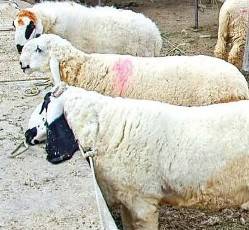The Messenger of Allah ![]() said: “A sacrificial animal must not be a lame animal whose lameness is obvious, a one-eyed animal which is clearly one-eyed, a sick animal whose sickness is obvious, or an emaciated animal that no one would choose.” [Ahmad]
said: “A sacrificial animal must not be a lame animal whose lameness is obvious, a one-eyed animal which is clearly one-eyed, a sick animal whose sickness is obvious, or an emaciated animal that no one would choose.” [Ahmad]
The Messenger of Allah ![]() forbade offering an animal that is missing a horn or an ear as a sacrificial animal. [Abu Daawood, At-Tirmithi, An-Nasaa’i and Ibn Maajah]
forbade offering an animal that is missing a horn or an ear as a sacrificial animal. [Abu Daawood, At-Tirmithi, An-Nasaa’i and Ibn Maajah]
It follows that as a one-eyed animal is not a valid sacrificial animal, the blind animal is also not valid for sacrifice.
Among the defects that invalidate the sacrifice is that the fat tail fat has been cut off or the udder is defective (small and dry due to old age).
There are defects that do not affect the animal’s validity for sacrifice but it is better to avoid them, such as:
- Whiteness of the eye.
- Slight lameness where the animal cannot catch up with the herd.
- An internal disease that does not affect the amount of meat or render it bad.
- Missing less than half of the horn or ear, or a punctured or slit ear.
There are matters that do not affect the validity of the animal, such as the animal having been born without ears, a fat tail or horns, and the animal having been castrated, because it is fleshier and its meat is tastier.


 Home
Home Discover Islam
Discover Islam Quran Recitations
Quran Recitations Lectures
Lectures
 Fatwa
Fatwa Articles
Articles Fiqh
Fiqh E-Books
E-Books Boys & Girls
Boys & Girls  Articles
Articles










